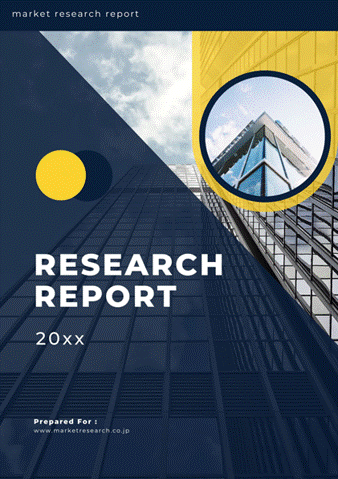 | • レポートコード:D0-MOR-AP0801 • 出版社/出版日:Mordor Intelligence / 2020年4月20日 • レポート形態:英文、PDF、102ページ • 納品方法:Eメール(受注後2-3営業日) • 産業分類:航空宇宙及び防衛 |
| Single User | ¥629,000 (USD4,250) | ▷ お問い合わせ |
| Team User | ¥703,000 (USD4,750) | ▷ お問い合わせ |
| Corporate License | ¥1,110,000 (USD7,500) | ▷ お問い合わせ |
• お支払方法:銀行振込(納品後、ご請求書送付)
レポート概要
| 本調査レポートは、軍用機用衝突回避システムの世界市場について調査・分析した資料で、軍用機用衝突回避システムの市場概要、動向、セグメント別市場規模、地域別分析、競争状況、企業情報、市場機会分析などで構成されています。 |
The military aircraft collision avoidance systems market (henceforth, referred to as the market studied) is expected to register a CAGR of over 4% during the forecast period.
– The growing emphasis on military aircraft safety has been one of the prime growth drivers for the market studied. Since most military aircraft operate in hazardous conditions, the chances of mid-air collisions and fatal accidents are very high. This has compelled military forces to adopt sophisticated airborne collision avoidance systems, as they help to improve the operational safety of aircraft and the pilots or troops.
– Implementation of stringent regulatory norms set by the Chicago Convention on International Civil Aviation and Standardized European Rules of the Air (SERA) may necessitate the implementation of military aircraft collision avoidance systems to ensure basic flight safety rules.
– Military forces across the world are using UAVs for long-range missions. Since the implementation of collision avoidance systems is mandatory in UAVs, an increase in the adoption of UAVs may necessitate the implementation of these systems, as they help to improve the operational safety and enhance the lifetime of UAVs.
Key Market Trends
The Unmanned Aircraft Segment is Expected to have the Highest CAGR During the Forecast Period
At present, the manned aircraft segment has a higher market share compared to unmanned aircraft segment, as the procurement of new manned aircraft is projected to be more during the forecast period. Additionally, militaries, like the United States, are upgrading their aircraft avionics to new generation ones, which includes incorporating new collision avoidance systems in the aircraft. However, during the forecast period, the unmanned aircraft segment is projected to register a high CAGR, owing to the growing UAV applications in military and the rate at which the procurements of UAV are growing among the militaries.
North America has the Highest Share in the Military Aircraft Collision Avoidance Systems Market in 2018
As of 2018, North America has the highest market share out of all the regions in the military aircraft collision avoidance systems market. The region is expected to witness the highest growth rate in the market studied, as the region includes countries, such as the United States and Canada, who invest heavily in new and advanced aircraft technologies, thereby maintaining their defense capabilities. For instance, in November 2016, Israel Aerospace Industries (IAI), developed a new collision warning system to increase military flight safety by warning pilots of potential crashes in commercial and civilian aircraft. This technology was developed for the USAF F-22 and F-35 fighters. Thus, the focus on procuring advanced collision avoidance systems is expected to help the market growth in the region during the forecast period.
Competitive Landscape
The military aircraft collision avoidance systems market is consolidated, with few players controlling the majority of the market. Honeywell International Inc., L3Harris Technologies, Inc., Collins Aerospace, Leonardo SpA, and Thales Group are some of the prominent players in the military collision avoidance systems market. As flight safety is one of the areas where aircraft OEMs spend more on reliability, irrespective of the pricing, companies are trying to manufacture advanced collision avoidance systems with enhanced capabilities to ensure more safety for the pilots and troops. Technological integration in this regard may help them gain a higher market share.
Reasons to Purchase this report:
– The market estimate (ME) sheet in Excel format
– 3 months of analyst support
1 INTRODUCTION
1.1 Study Assumptions
1.2 Scope of the Study
2 RESEARCH METHODOLOGY
3 EXECUTIVE SUMMARY
4 MARKET DYNAMICS
4.1 Market Overview
4.2 Market Drivers
4.3 Market Restraints
4.4 Porter’s Five Forces Analysis
4.4.1 Threat of New Entrants
4.4.2 Bargaining Power of Buyers/Consumers
4.4.3 Bargaining Power of Suppliers
4.4.4 Threat of Substitute Products
4.4.5 Intensity of Competitive Rivalry
5 MARKET SEGMENTATION
5.1 System Type
5.1.1 Radars
5.1.2 TCAS
5.1.3 TAWS
5.1.4 CWS
5.1.5 OCAS
5.1.6 Synthetic Vision Systems
5.2 Aircraft Type
5.2.1 Manned Aircraft
5.2.2 Unmanned Aircraft
5.3 Geography
5.3.1 North America
5.3.1.1 United States
5.3.1.2 Canada
5.3.2 Europe
5.3.2.1 Germany
5.3.2.2 United Kingdom
5.3.2.3 France
5.3.2.4 Italy
5.3.2.5 Rest of Europe
5.3.3 Asia-Pacific
5.3.3.1 India
5.3.3.2 China
5.3.3.3 Japan
5.3.3.4 South Korea
5.3.3.5 Rest of Asia-Pacific
5.3.4 Latin America
5.3.4.1 Brazil
5.3.4.2 Mexico
5.3.4.3 Rest of Latin America
5.3.5 Middle-East and Africa
5.3.5.1 United Arab Emirates
5.3.5.2 Saudi Arabia
5.3.5.3 Egypt
5.3.5.4 Rest of Middle-East and Africa
6 COMPETITIVE LANDSCAPE
6.1 Vendor Market Share
6.2 Company Profiles
6.2.1 Honeywell International Inc.
6.2.2 L3Harris Technologies, Inc
6.2.3 Collins Aerospace (United Technologies Corporation)
6.2.4 Leonardo SpA
6.2.5 Thales Group
6.2.6 Raytheon Company
6.2.7 Garmin Aerospace
6.2.8 Avidyne Corporation
6.2.9 Sandel Avionics Inc.
7 MARKET OPPORTUNITIES AND FUTURE TRENDS